

26 April 2018 Update: National Archives released an additional 18,731 documents relating to the November 1963 Kennedy Assassination and connected investigations. This fell short of the goal of releasing all available documents. Almost 16,000 records have been released only in part and another 520 records remain entirely under seal. Citing continuing national security, law enforcement and foreign affairs concerns, President Donald Trump ordered that these pages and redacted sections of pages remain sealed until at least 26 October 2021.
Some Kennedy assassination-related documents recently released through the National Archives (large batches were released 26 April 2018, 26 October 2017 and 24 July 2017) discussed CIA cooperation with American organized criminals in an effort to assassinate Cuban dictator Fidel Castro. The documents revealed little about CIA-underworld interaction that was not already known to historians through other sources, but the release provides confirmation, as well as an occasion to reflect upon that interaction and its aftermath.
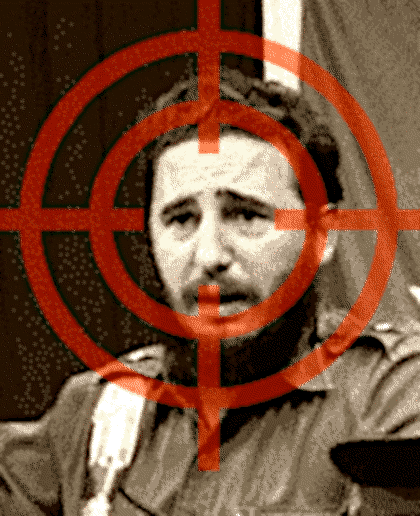
Additional documents remain under lock and key at least until autumn 2021. While these may reveal further details, it is likely that they will be in general agreement with the papers we already have.
The key features of the government-underworld conspiracy appear to be these:
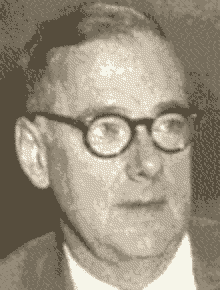
Bissell
Many have linked the Castro assassination plot to the Bay of Pigs invasion conducted by U.S.-backed Cuban exiles and to the so-called "Operation 40" government overthrow planned to follow that invasion. But CIA documents suggest that the assassination scheme was separate from other planning. The invasion and assassination schemes were both overseen by CIA Deputy Director of Plans Richard M. Bissell, Jr. However, summaries of the assassination-related plotting do not suggest a coordinated effort or even mention the invasion of Cuba and the overthrow of its Communist government.
Two decades after the assassination plot was abandoned, Bissell stated that the murder of the Cuban dictator was "intended to parallel" the invasion.
There has been some disagreement among involved individuals on the timing of the CIA efforts to assassinate Fidel Castro and on who was responsible for initiating them. Bissell repeatedly attempted to pass the buck only to find that it was passed right back to him.
Bissell told Rockefeller Commission investigators in the mid-1970s that CIA plans for the Castro assassination began in early 1961 (start of the Kennedy Administration). He told the Rockefeller Commission investigators (and later repeated in other statements, including his published memoirs) that he learned from Colonel Sheffield Edwards, director of CIA office of security, that the agency was exploring the possibility of working with the U.S. Mafia to kill Castro. According to Bissell, organized criminals first approached CIA personnel with the idea.
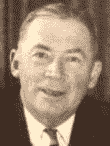
Edwards
Sheffield Edwards recalled this differently. He told investigators that Bissell originated the idea and first contacted him in January 1961 to ask "if I had any assets... that would be available into the Syndicate."
Official documents largely supported Edwards' view, but those, including a memorandum written by Edwards himself on May 14, 1962, suggested that CIA conversations about a Castro assassination began months earlier - as early as August of 1960 - during the Eisenhower Administration. Records of a National Security Council meeting suggest that a Castro assassination was discussed by Eisenhower officials in deliberately vague terms even before that, in March of 1960.
The Edwards memorandum stated that Bissell approached him in August 1960 "to explore the possibility of mounting this sensitive operation against Fidel Castro. It was thought that certain gambling interests, which had formerly been active in Cuba, might be willing and able to assist and further, might have both intelligence assets in Cuba and communication between Miami, Florida and Cuba."
The contact between Bissell and Edwards was described just a bit differently in a June 1966 summary by then-CIA Director of Security Howard J. Osborn:
The CIA reportedly decided that $150,000 would be offered to an assassin for eliminating Castro, with payment "made on completion of the operation." The agency then used an intermediary to reach out to organized criminals, many of whom lost huge casino investments upon Castro's takeover in Cuba.
The intermediary, posing as a businessman with no government connection, first contacted an individual vaguely described in early documents as a gambling syndicate member with business interests in Cuba and contacts in Miami. The intermediary proposed hiring a mob-affiliated assassin to kill Castro.
The participants in the plot were more specifically identified in government documents composed later, including two summary reports by CIA Director of Security Howard J. Osborn. The documents identified the CIA intermediary as Robert A. Maheu. A former agent of the FBI, Maheu worked fairly steadily for the CIA on "cut-out" assignments, in which the agency's role needed to be hidden. In the private sector, he engaged in detective work and public relations and was later an important aide to Howard Hughes.
Osborn's memos identified the gambling syndicate connection as mobster "Johnny Roselli."" (His name was originally Filippo Sacco, but he adopted the name John Rosselli - two s's - during the Prohibition Era. Few sources ever used his preferred double-s spelling.) Linked with the Chicago Outfit, Roselli also had underworld connections on the West Coast and in Florida. In the 1940s, while serving in the military, Roselli was convicted of participating in a Chicago Outfit plot to extort millions from the movie industry and a film union. He served three years of a ten-year sentence before being paroled in 1948.
Maheu had met Roselli several times in Las Vegas, beginning in the later 1950s. He had heard that Roselli was a high-ranking underworld figure - there was a rumor that Roselli held a monopoly on all ice produced on the Vegas strip - and felt it was likely that he had connections to racketeers involved in pre-Castro Cuban gambling enterprises.
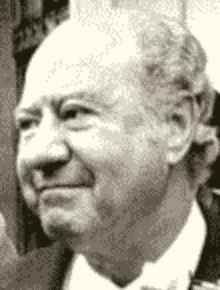
Maheu
Maheu and Roselli met at the Hilton Plaza Hotel in New York City on September 14, 1960. CIA case officer James O'Connell was also present. Maheu stated that he represented international businesses suffering financial losses in Cuba as a result of Castro's policies. He introduced O'Connell as his employee, and O'Connell became Roselli's primary contact.
Maheu told Roselli that his clients were willing to spend $150,000 to be rid of Castro. Roselli was hesitant to involve himself and outright refused to take any money. He was eventually convinced by an appeal to his patriotism to arrange a meeting for Maheu with underworld figures he called "Sam Gold" and "Joe." For his dealings with other anti-Castro plotters, Roselli adopted the cover name, "John Ralston."
On September 25, 1960, Maheu was introduced to "Sam Gold" and "Joe." "Sam Gold," then staying at the Fontainebleu Hotel in Miami, was said to have influence over Cuban gambling investors. "Joe" was described as a syndicate courier between the U.S. and Havana. The gathering launched several months of negotiations and planning.
In October, Maheu spotted magazine photographs of the men he was working with. He learned that "Sam Gold" was actually Salvatore "Momo" Giancana, boss of the Chicago Outfit, and that "Joe" was Tampa Mafia boss Santo Trafficante, Jr., supervisor of U.S. underworld investments in Cuba. Both men were on the most-wanted list of the U.S. attorney general.
Maheu reported back to the CIA that his underworld contacts "emphatically stated that they wished no part of any payment." (This out-of-character generosity may indicate that the crime figures were already aware of the government's involvement in the plot and perceived relationship benefits beyond cash.)
According to Edwards' memorandum, the CIA plan was known to only about half a dozen people inside the agency, including Director Allen Dulles, Deputy Director Gen. Charles P. Cabell, Deputy Director of Plans Richard Bissell, case officer James O'Connell and Edwards himself. (At another time, Edwards stated that Dulles remained unaware of the scheme.)
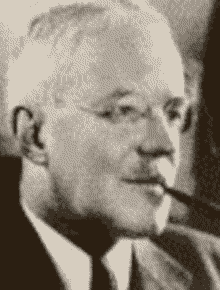
Dulles
No contemporaneous documents were written about it and approvals by senior CIA officials were provided only orally, according to Edwards. It was later established that no approval was sought from the Department of Justice for this arrangement with crime figures already known to be targeted for prosecution by the DOJ-leading attorney general.
Involved CIA officials did not recall any conversations about the plan with any members of the Eisenhower White House. Richard Bissell told investigators he assumed that Dulles advised President Eisenhower of the matter, but qualified that as merely a guess. According to Bissell, the matter was not brought up during November 1960 intelligence briefings with President-elect Kennedy.
Bissell left open the possibility that Dulles advised Kennedy of the Castro assassination plan at some other time. Bissell recalled personally having later discussions with a member of the Kennedy Administration, but he could not remember clearly who it was. He said he believed it was either National Security Assistant McGeorge Bundy or Deputy Assistant Walt Rostow, possibly both. Bissell expressed a vague recollection that he was encouraged to proceed with his planning.
Rostow subsequently told investigators he did not recall any such discussions. Bundy stated that he remembered some contingency planning that may have involved talk of Castro's assassination, but he did not believe the Administration ever authorized the assassination:
More than a decade later, at least one government body (the Senate's Church Committee) found that the mechanisms in place for executing covert activities, such as the planned assassination of a foreign leader, were designed to insulate the President from any apparent involvement in the approval process. The CIA routinely employed procedures that preserved "plausible deniability" for the President. Congress took action at that time to compel clear approval from the President for any covert action, but "plausible deniability" insulation of the President remained a priority for many in the intelligence community.
Simply shooting the Cuban president was ruled out by the plotters because it provided little chance for escape (and captured assassins could be made to reveal the plot). It was planned instead that the assassin would place poison botulism pills in Castro's food. Osborn documents indicate that it was Chicago boss Giancana who first suggested the use of poison.
A Cuban official named Juan Orta was selected to carry out the poisoning. Orta had previously taken protection payments from U.S. gambling interests in Cuba. He managed to work his way into Castro's good graces following the change in government, but he was in need of money.
By mid-October, news of the plot against Castro was leaking, and the Chicago Outfit boss was responsible. The FBI - not party to the planning process - reported learning from a source that Sam Giancana was discussing the imminent assassination of Castro:
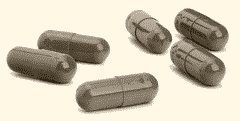
The FBI reported the alleged Giancana statements to Bissell at the CIA. Bissell was undeterred. CIA-Mafia planning continued.
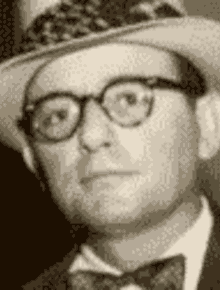
Trafficante
Six botulism pills were produced by the CIA Technical Services Division (now the Office of Technical Services). Apparently without knowing the intended use of the pills, Division Chief Cornelius Roosevelt assigned Dr. Raymond Triechler to the task. The goal was to develop a pill with "rapid solubility, high lethal content, and little or no traceability." The pills were checked for effectiveness by Dr. Edward M. Gunn, who also remained unaware of their purpose.
Three of the pills were delivered to Trafficante, who got them to Orta. Several weeks passed as Orta looked for an opportunity to poison the Cuban president. Over that time, he lost his nerve and backed out of the assignment.
The CIA-underworld venture, still hiding as much as possible its relationship to the U.S. government, reached agreement with a "second principal," based in southern Florida. This was Dr. Anthony Verona, a leader in the Cuban Exile Junta organization. Posing as anti-Castro business interests, the CIA passed him a sum of $10,000 for his expenses. Communications equipment valued at $1,000 was provided to link Verona's Miami headquarters with his connections inside Cuba.
Three more poison pills were delivered to a worker in a restaurant frequented by the Cuban president. Those pills were never used and reportedly were sent back through the chain of connections to CIA.
Publicity of U.S. involvement in the failed Bay of Pigs invasion of April 1961 derailed the assassination plan. Sheffield Edwards recalled that "the plan... petered out."
Some time after the Bay of Pigs, Maheu was told to visit with his syndicate contacts and call off the operation. He was to make it clear that the $150,000 bounty on Castro had been canceled.
(A statement attributed to Roselli indicated that the CIA-Mafia plotting actually continued for some time after the Bay of Pigs, but Maheu was cut out of the loop at that time and Mafiosi made contact directly with CIA case officers.)
According to an FBI report, Maheu later recalled that the participants in the operation promised the CIA that they would never divulge their relationship to the agency, that they would not use their participation to further their private business interests and they would not attempt blackmail.
Despite the vow, there were a number of documented attempts by Giancana and Roselli to obtain assistance from the CIA (these are discussed below), and Roselli and Trafficante later revealed their roles in the assassination planning. More attempts by Giancana, Roselli and their underworld associates may have been unrecorded by the agency.
Bissell's secretary reportedly received numerous calls on a private line allocated for the Mafia contacts, but the calls were refused by Bissell. The secretary also stated to investigators that Bissell received at some point a written offer by Mafia boss Joseph Bonanno to assassinate Castro. Bissel reportedly kept that letter but seemed reluctant ever to touch it.
The Castro assassination plans were briefly resurrected around the time of the Cuban missile crisis in October 1962. A new CIA case officer, William Harvey, had taken over management of continuing connections to organized crime leaders. That officer was encouraged to look into developing an "executive action capability" for the assassination of foreign leaders.
The new plans - nicknamed "Phase II" - explored the potential for assassinating Castro through poison pills or rifle fire. Funds, estimated at somewhat less than $5,000, were sent through underworld contacts for the purchase of firearms and drugs. The CIA case officer grew concerned about possible exposure of the Phase II plans and canceled them in the spring of 1963.
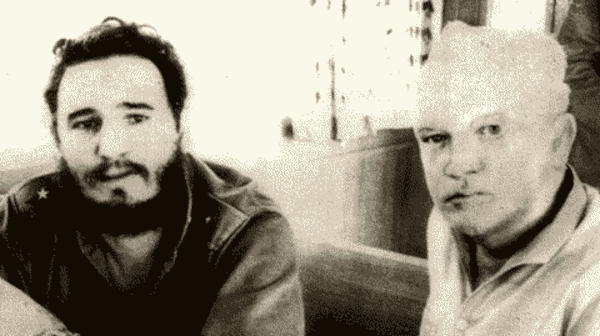
Castro and Donovan
dailymail.co.uk, 2015
CIA plotting did not end with the cancellation of Phase II. In 1963, additional schemes for the elimination of Castro were discussed within the agency. One suggestion that was part of this "Phase III" involved presenting Castro with a skindiving suit lined with a fungal powder that would produce the disease eumycetoma (commonly known as "Madura foot"). Castro was known to be an avid skindiver. It was suggested that the suit would be delivered to Castro by James B. Donovan, who was negotiating for the release of Bay of Pigs prisoners. It was further suggested that Castro be given an underwater breathing apparatus contaminated with tuberculosis. These ideas were discarded after Donovan, who apparently knew nothing of them, decided independently to give Castro a skindiving suit as a gesture of friendship.
Phase III also included a "hare-brained" (according to later CIA official Richard Helms) and entirely unworkable scheme to rig an explosive charge to a large and attractive seashell and place it by midget submarine in an area where Castro enjoyed diving.
For a couple of years, the CIA had "Phase IV" discussions with a Cuban official who hoped to organize an anti-Castro coup. No specific assassination plans were devised, though the elimination of Castro and his close associates was necessary to the scheme. The Cuban contact met secretly with a CIA representative in Europe on Nov. 22, 1963 (the same date that President Kennedy was shot to death in Dallas, Texas). At that meeting, there was discussion of a gadget weapon that the Cuban could use in case of a confrontation with Castro. The CIA revealed a ballpoint pen that became a hypodermic needle with the touch of a lever and could deliver a poison injection. The Cuban refused that device, as it would require him to be very close to Castro in order to strike. He suggested instead that a pellet-shooting pen be developed.
During Phase IV discussions, a number of weapons, including high-powered rifles with scopes, and about $1,000 were sent to Cuba in support of the coup conspiracy. By 1965, the CIA withdrew its support for the plan because it felt too many people knew of the plotter's disenchantment with Castro.
As Maheu made his initial vague contact with Sam Giancana, the Chicago Outfit boss apparently figured out that the CIA was behind the anti-Castro plot and began devising ways of using that to his personal advantage.
Howard Osborn's June 1966 memo indicated that Roselli was the first to guess that his partners were with the CIA. At one point, Roselli told case officer O'Connell, posing as Maheu's employee, that he was convinced O'Connell worked for the CIA. Giancana was never heard discussing the CIA, but Maheu suspected that he also knew of the agency's involvement.
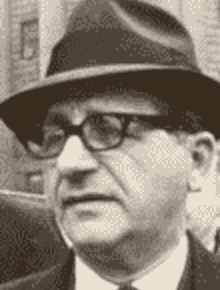
Giancana
During anti-Castro planning sessions, Giancana told Maheu about his concerns that his Las Vegas-based girlfriend, singer Phyllis McGuire, was having an affair with Vegas comedian Dan Rowan. Giancana asked if Maheu could arrange for the installation of a listening device in Rowan's hotel room to monitor his level of intimacy with McGuire. If that was not accomplished, Giancana said he would need to drop the anti-Castro plotting, go to Las Vegas and handle the matter himself.
Maheu turned the request over to private investigator Edward Du Boise who contacted Arthur James Balletti. Perhaps misunderstanding the request, Balletti installed a tap on the comedian's telephone. The clumsily executed eavesdropping was discovered, and Balletti was arrested. Held by the local sheriff, Balletti awkwardly reached out for assistance to Maheu and to the CIA itself (Balletti apparently also was aware that Maheu was working with the CIA). Maheu's connection to the sordid matter came to the attention of the Department of Justice and the FBI. The Department of Justice announced its intention to prosecute both Balletti and Maheu for wiretapping.
At that point, Maheu called in support from Sheffield Edwards at the CIA. In February or March of 1962, the CIA pressured the DOJ to drop the matter, dishonestly insisting the bugging related to the acquisition of intelligence on Cuba. On March 23, Edwards met with Sam Papich, the FBI liaison to the CIA, and stated that prosecution of the case would not be in the national interest.
At the time, the continuing relationship between organized crime figures and their partners in the CIA was reportedly unknown to the CIA's own top officials. Following the Bay of Pigs fiasco, Richard Bissell had been forced out of the CIA, along with Deputy Director Charles Cabell. Director Allen Dulles resigned from his post a short time later on Nov. 29, 1961. Their replacements, including Director John McCone and Plans Deputy Director Richard Helms, apparently had not learned of the aborted effort to kill Castro or the connections with organized criminals and had no knowledge of the possible negative exposure for the agency through an investigation of the Balletti wiretapping.
Under Director J. Edgar Hoover, the FBI discovered CIA connections with Balletti, Maheu and Giancana. The Bureau brought the connections to the attention of Attorney General Robert Kennedy (and indirectly to the CIA's own leaders). In a memorandum, the FBI recorded Kennedy's concern that the CIA action adversely affected the Department of Justice: "...Because of this matter it would be difficult to prosecute Giancana or Robert Maheu then or in the future."
Following exposure of the arrangements by the FBI, Sheffield Edwards met with his CIA superiors and with Attorney General Robert Kennedy to explain the situation.
As the CIA wrestled with later phases of the anti-Castro plot, Johnny Roselli found himself in trouble with the law once again. He was connected with fixed card games held at the Beverly Hills Friars Club. (He reportedly was introduced to the club by entertainers Frank Sinatra and Dean Martin.) When called before a federal grand jury investigating gambling in 1967, Roselli tried to refuse to answer even questions relating to his name. Later in that year, he was charged with failure to register as an alien. Roselli had frequently insisted that he was born in the U.S., but federal officials found documents showing that he entered the U.S. as a six-year-old in 1911.
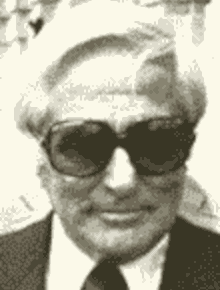
Roselli
FBI reports indicated that Roselli was called upon by Maheu to do some favors for Maheu employer Howard Hughes. Hughes wanted to rent the top floor of the Desert Inn in Las Vegas in 1966, but the hotel refused. Maheu got Roselli to persuade the hotel management to change its mind. When the management later tried to get Hughes to vacate the floor, Maheu once again had Roselli use his influence. The April 1, 1967, sale (long-term lease) of Desert Inn to the eccentric billionaire also is said to have been accomplished through pressure by Roselli.
Maheu and Roselli later had a falling out, when Roselli demanded that Edward Levinson be hired to manage the Desert Inn casino.
As the cases against Roselli moved through the courts, he reached out several times to the CIA. Case officer William Harvey heard from him in November and December of 1967 and in January 1968. Harvey reported the contacts to the CIA Office of Security and expressed his opinion that Roselli would not specifically request agency assistance unless he was facing deportation from the U.S.
Roselli was convicted late in 1967 of illegal entry into the U.S. and on December 2, 1968, of conspiracy to cheat members of the Friar's Club out of $400,000. On November 17, 1970, appeals of his alien registration violations had been exhausted and there was further communication with the CIA.
Roselli's attorney Thomas Waddin called Ed Morgan, attorney for Maheu, to deliver a threat. Waddin indicated that, if someone at CIA did not prevent Roselli's deportation, Roselli would expose his involvement with the agency and the schemes against Castro. Morgan relayed the message to Maheu, and Maheu brought it to the attention of case officer James O'Connell.
Top officials of the CIA immediately discussed the matter and concluded the following day that they would not give in to the underworld extortion - they would take no action to assist Roselli. Maheu was advised and stated his agreement with the position. That was not the end of the story for the CIA and Roselli, however.
Early in 1971, Jack Anderson's "Washington Merry-Go-Round" columns revealed the CIA's cooperation with organized criminals in developing plans to kill Castro. (Anderson had speculated on CIA plots against Castro as early as 1967.) The CIA concluded that Anderson had received his information either directly from Johnny Roselli or from a Roselli representative.
The Anderson columns exaggerated the CIA plots into invasions of Cuba by six separate assassination teams. In his columns, Anderson connected the anti-Castro efforts to the assassination of President Kennedy by identifying Lee Harvey Oswald as a pro-Castro fanatic:

Anderson
(Anderson was giving voice to an opinion held by many. Fidel Castro had issued a public warning early in September 1963 that he would retaliate against U.S. leaders conducting secret operations against Cuba. American officials took measures to protect against retaliation, but they were convinced that any Castro action would be "low level." The idea that a top American political leader might be assassinated was considered and rejected by the officials.)
The columnist initially described Roselli as "a ruggedly handsome gambler with contacts in both the American and Cuban underworlds" and later as "a top Mafia figure who watched over the concealed interests in Las Vegas casinos of the Chicago underworld."
Just three days after the second Anderson column, CIA officials became involved in the Roselli matter. According to a document supplied by the agency in July 1975 to the Senate Select Committee to Study Governmental Operations with Respect to Intelligence Activities (Church Committee), CIA personnel on February 26, 1971, asked the commissioner of the Immigration and Naturalization Service about Roselli's status:
A 1975 investigation of the CIA by the Rockefeller Commission discovered documents supporting a number of the allegations discussed years earlier in the Jack Anderson columns. The documents were reports filed by the FBI after looking into the CIA's involvement in the Las Vegas wiretapping case. The discoveries were widely publicized. The press also learned that J. Edgar Hoover, late director of the FBI, had expressed concern that the Giancana connection to the CIA would permit the crime boss to blackmail the government. In April 1976, the New York Times completed a two-month investigation of the relationships of Giancana and Roselli with the U.S. government and published the detailed results. The story, which suggested lenient government treatment of both Giancana and Roselli as a result of their CIA link, was picked up by media across the country.
The 1970s exposure of the CIA's relationship with underworld figures may have had more dire consequences for the criminals than for the involved government officials. Mafiosi are generally forbidden to cooperate with government agencies.
Trafficante - Of Maheu's three contacts in U.S. organized crime leadership, only Santo Trafficante, Jr., managed to die of natural causes. Trafficante was largely ignored by the press as the anti-Castro plot was uncovered. He also appears to have been the only one of the three crime-figure contacts not to attempt to use his CIA relationship for his personal advantage.
When called before Kennedy assassination investigators in the late 1970s, Trafficante admitted participating in CIA anti-Castro plots.
In the 1980s, Trafficante was indicted for racketeering and conspiracy, as well as for taking kickback payments from International Laborers Union healthcare plans. The racketeering and conspiracy case ended in mistrial in 1986. Trafficante did not live long enough to be tried in the union kickback case. He died March 17, 1987, following a triple-bypass heart operation in Houston, Texas.
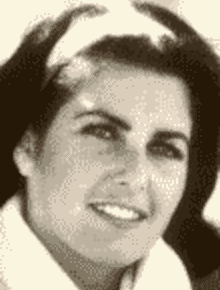
Campbell
Giancana - "Momo" Giancana was widely believed to have connections to the Kennedy family and to have lent his support the election of President Kennedy. There were rumors, examined by the FBI, that Giancana and John Kennedy had a girlfriend in common, Judith Campbell, ex-wife of actor William Campbell (Judith Campbell also had been a friend of Roselli). Despite these connections, President Kennedy's brother Attorney General Robert Kennedy worked tirelessly to put Giancana behind bars. Under the Kennedy Department of Justice, FBI was so relentless that Giancana sued the Bureau in 1963 to halt its surveillance.
As Giancana was the complainant in that case, he was required to take the witness stand and was legally subject to cross examination by Assistant U.S. Attorney John Peter Lulinksi. Perhaps because of Giancana's role in the Castro matter (perhaps because he threatened to publicly reveal that role), the Department of Justice reportedly ordered Lulinksi not to question Giancana. The Chicago Sun-Times newspaper reported in 1963 that a Giancana link to the CIA caused earlier wiretapping charges to be dropped.
The Chicago boss was jailed for contempt in 1965 after refusing to testify before a grand jury that had given him immunity from prosecution. The following year, there was a move to repeat the exercise of attempting to question Giancana under immunity. The Department of Justice put a stop to it.
As Giancana was released, he fled the U.S. for Mexico (he had been a frequent visitor there since the 1950s). He lived there for years under the assumed named of Sam De Palma. Others assumed control of the Chicago Outfit in his absence. Giancana reentered the U.S. after being expelled from Mexico in 1974. He testified with immunity before a federal grand jury in Chicago.
The following spring, his cooperation with the CIA and his use of a CIA contact to spy on his Las Vegas girlfriend became public knowledge. The U.S. Senate's Church Committee sought to have Giancana testify about the CIA in the summer of 1975. The committee reached out to him in June. A short time later, on the evening of June 19, the sixty-seven-year-old mobster was found shot to death on the floor of a basement kitchen in his home. Seven .22-caliber bullets had been fired into his head and neck.

Roselli - Jack Anderson's publicity of Roselli's work with the CIA occurred while Roselli was frantically fighting deportation, appealing criminal convictions and attempting to have his 1940s military discharge changed from "undesirable" to "honorable." Calling attention to the Anderson columns, Roselli attorneys argued that their client deserved clemency for his patriotism. Judges appeared unimpressed by their argument, but Roselli remained in the U.S. as his appeals dragged on.
Five days after the execution-murder of his old friend Giancana, Roselli appeared in closed session and under heavy guard before the Senate's Church Committee. He testified for two hours and confirmed published details of his involvement with the CIA in anti-Castro plotting.
Roselli attorney Leslie Scherr told the press that, despite the recent Giancana murder, Roselli did not fear for himself but was concerned for his relatives. Roselli was a bit more frank about the dangers during his committee appearance. On more than one occasion, he stated that he was taking a great risk in testifying. It was noted that Roselli declined to give his precise address, avoided mentioning any Cuban connections by name and did not utter the name of Santo Trafficante.
Following the testimony, Jack Anderson published a column containing what he said was "Roselli's own account of a real-life 'Mission Impossible.'" Anderson said Roselli told him the entire exclusive story upon leaving the Senate committee's hearing room. Given the common information between that Anderson column and the earlier ones from 1971, it seems likely that Roselli actually provided him with the information off-the-record four years earlier and merely granted the columnist permission to connect his name with the account in 1975.
Roselli returned to his home in southern Florida. On July 26, 1976, he borrowed a car from his sister and drove off to play golf at Plantation, Florida. The car was later found, with Roselli's golf clubs in the trunk, at the Miami Airport. Roselli could not be located. An international plane trip was ruled out because Roselli did not hold a valid passport and was still appealing a deportation order.
On August 7, fishermen discovered a 55-gallon drum wrapped with heavy chains floating in Dumfoundling Bay, a shallow branch of Biscayne Bay near North Miami Beach. The partially dismembered remains of seventy-one-year-old Roselli were found inside. Roselli's legs had been amputated and placed along with his body in the sealed drum. His body showed a circular wound at the abdomen, possibly the result of a gunshot. After a nine-hour examination, Dade County authorities determined that Roselli had died of asphyxiation. Authorities noted that Roselli had recently met with known crime figures from the Los Angeles area.
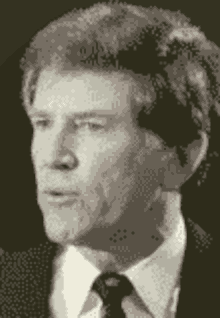
Hart
Though Giancana's murder had been quickly attributed to a power struggle within the Chicago Outfit, the killing of Roselli caused some to wonder if the two murders were related to the work Giancana and Roselli did with the CIA. Attorney General Edward Levi ordered the FBI, which typically had no role in homicide investigations, to involve itself in the case. The U.S. Senate's Select Committee on Intelligence (formed in spring 1976 as the successor to the Church Committee), which had been examining CIA activities, was especially concerned. Committee member Senator Gary Hart of Colorado made a personal trip to Florida to speak with law enforcement officials about the case.
Hart told the press, "We want to find out if there is any connection between [Roselli's] death and his testimony before the Committee." In fact, Hart also intended to ensure that investigators were aware of the CIA and underworld connections of Roselli and Giancana, and he sought official approval to share portions of committee transcripts with the involved detectives.
While a great deal is known of the CIA-Mafia working relationship of the early 1960s, some serious questions remain. Some of these may be unanswerable. The intelligence community's desire to preserve "plausible deniability" for the U.S. President and other top officials may prevent us from ever learning whether U.S. Presidents approved (or perhaps ordered) the CIA-Mafia cooperative effort to assassinate Fidel Castro. This deliberate effort to insulate Presidents, coupled with the apparently deliberate effort by CIA officials like Bissell and Edwards to confuse how and when the conspiracy came together, who initiated it and who knew of it, leaves us to wonder whether the Castro-murder plan was an integral part of U.S. efforts to remove Cuba's communist dictatorship or merely the hobby of a small band somewhat independently dabbling in assassination.
We have some information showing ways that Giancana and Roselli sought to use their relationship with the CIA to achieve their own personal ends. But there is little reason to feel that we know the full extent of the Mafia's attempts to extort the intelligence community. How many telephone calls were made to Bissell's private lines before he stopped taking them, and what caused him to begin refusing the calls? Is there any truth to the tale of a written offer from crime boss Joseph Bonanno?
There is reason to wonder about the pitifully unsuccessful effort to keep CIA involvement in the project a secret. Given the believable story line reportedly used by Maheu and O'Connell, how did Giancana and Roselli so quickly determine that the CIA was involved? How did the technician hireling of a private investigator acquainted with Maheu learn that his assignment originated with mob boss Sam Giancana and involve the support of the nation's most secretive agency?
Organized crime historians will continue to wonder about the violent deaths of Giancana and Roselli, two of the more influential underworld leaders of their time. Was their cooperation with the CIA - made public through news coverage - an important factor in their murders? Was Santo Trafficante able to avoid a similar fate merely because he flew beneath the media radar?
It is possible that another release of formerly secret government documents will provide us with guidance on some of these issues. It is doubtful that any government record will help us toward an answer of the largest remaining question: Did the CIA-Mafia plan to "liquidate" Fidel Castro lead in any way to the November 22, 1963, assassination of U.S. President John Kennedy in Dallas?
Web links to government documents have been provided whenever possible.
Government documents released during 2017 are shown preceded by an asterisk.
• Anderson, Jack, "The Washington Merry-Go-Round: 6 attempts to kill Castro laid to CIA," Washington Post, Jan. 18, 1971, p. B7.
• Anderson, Jack, "The Washington Merry-Go-Round: Castro stalker worked for the CIA," Washington Post, Feb. 23, 1971, p. B11.
* Belin, David, "Summary of Facts - Investigation of CIA involvement in plans to assassinate foreign leaders," Report of President's Commission on CIA Activities in the United States (Rockefeller Commission), May 30, 1975, released Oct. 26, 2017, NARA record no. 178-10004-10091.
• Bissell, Richard Jr., Jonathan E. Lewis and Frances T. Pudlo, Reflections of a Cold Warrior: From Yalta to the Bay of Pigs, New Haven CT: Yale University Press, 1999.
* Church Committee, "Report of Proceedings," Senate Select Committee to Study Governmental Operations with Respect to Intelligence Activities, March 17, 1976, released July 24, 2017, NARA no. 157-10014-10124.
* Church Committee, "Report of Proceedings," Senate Select Committee to Study Governmental Operations with Respect to Intelligence Activities, May 26, 1976, released Oct. 26, 2017, NARA no. 157-10002-10179.
* Church Committee, "Richard Bissell," interview and meeting summary, Aug. 6, 1975, released Oct. 26, 2017, NARA no. 157-10014-10169.
* Church Committee, "Roselli: Chronology of Events," 1976, released July 24, 2017, NARA no. 157-10014-10236.
* Church Committee, Portion of Transcript of John Roselli, undated, released Oct. 26, 2017, NARA no. 157-10014-10217.
• Crewdson, John M., "Church denies cover-up of a Kennedy friendship," New York Times, Dec. 16, 1975, p. 1.
• Dunn, Edward J., Jr., "Roskil," FBI report, file no. 92-3267-1071, March 22, 1977, NARA no. 124-10289-10035.
* Elder, Walter, "CIA intercession on behalf of Robert Maheu and/or Salvatore Giancana and/or John Rosselli...," letter to William G. Miller, staff director of Senate Select Committee to Study Governmental Operations with Respect to Intelligence Activities (Church Committee), July 28, 1975, released July 24, 2017, NARA no. 157-10014-10113.
• Gage, Nicholas, "2 Mafiosi linked to C.I.A. treated leniently by U.S.," New York Times, April 13, 1976, p. 1.
• Harris, Kathyrn, "Johnny Roselli: There are missing lines from the last big scene in the play of his life," St. Petersburg FL Times, Aug. 25, 1976, p. D1.
• Hersh, Seymour M., "Aides say Robert Kennedy told of C.I.A. Castro plot," New York Times, March 10, 1975, p. 1.
• Hertel, Howard, "Friars witness indicted as unregistered alien," Los Angeles Times, Oct. 21, 1967, p. 13.
• Hertel, Howard, "U.S. grand jury begins probe of Roselli's past," Los Angeles Times, Sept. 8, 1967, p. B8.
• Horrock, Nicholas M., "'61 memo is cited on C.I.A.-Mafia tie," New York Times, May 30, 1975, p. 20.
• Horrock, Nicholas M., "Files said to link Mafia to C.I.A. in plot on Castro," New York Times, May 20, 1975, p. 1.
• Horrock, Nicholas M., "Roselli describes his role in a C.I.A. plot on Castro," New York Times, June 25, 1975, p. 1.
• King, Seth, "Giancana, gangster, slain; tied to C.I.A. Castro plot," New York Times, June 21, 1975, p. 1.
• Leusner, Jim, and Tom Scherberger, "Florida's reputed don, Santo Trafficante, dies," Orlando Sentinel, March 19, 1987, p. 1.
• Miami, "John Roselli," FBI Teletype, file no. 92-3267-1059, Aug. 8, 1976, NARA no. 124-10289-10024.
• Osborn, Howard J., "Johnny Roselli," CIA summary report, May 16, 1973, CIA Family Jewels, released June 25, 2007, Doc ID 1451843.
* Osborn, Howard J., "Maheu, Robert A.," CIA memorandum to Deputy Director of Central Intelligence, June 24, 1966, released July 24, 2017, NARA no. 104-10320-10095.
• Osborn, Howard J., "Roselli, Johnny," CIA memorandum to Director of Central Intelligence, Nov. 19, 1970, CIA Family Jewels, released June 25, 2007, Doc ID 1451843.
• Passenger manifest of S.S. Cretic, departed Naples on Sept. 2, 1911, arrived New York Sept. 17, 1911.
• Roy, Roger, "He never spent a night in U.S. jail," Orlando Sentinel, March 19, 1987, p. 4.
• United States v. Compagna et al., 146 F.2d 524 (1944), Second Circuit Court of Appeals, decision April 2, 1945, leagle.com.
• Westerfield, H. Bradford, "Reflections of a Cold Warrior: From Yalta to the Bay of Pigs," book review, Central Intelligence Agency, cia.gov.
• "16 indicted over union fund use," New York Times, June 5, 1981.
• "Crime figure, linked to plot on Castro, found slain," New York Times, Aug. 9, 1976, p. 15.
• "Crime figure who aided plot on Castro is missing," New York Times, Aug. 6, 1976, p. D13.
• "F.B.I. to investigate murder of Roselli," New York Times, Aug. 14, 1976, p. 1.
• "Inquiry had planned to call Giancana," New York Times, June 21, 1975, p. 12.
• "Judge declares mistrial in Florida crime case," New York Times, July 10, 1986.
• "Samuel M. Giancana," FBI report, file no. 92-636-3, May 5, 1961, NARA no. 124-90024-10122.
• "Santo Trafficante, reputed Mafia chief, dies at 72," New York Times, March 19, 1987.
• "The C.I.A. and the Mob," New York Times, June 26, 2007, washington.blogs.nytimes.com